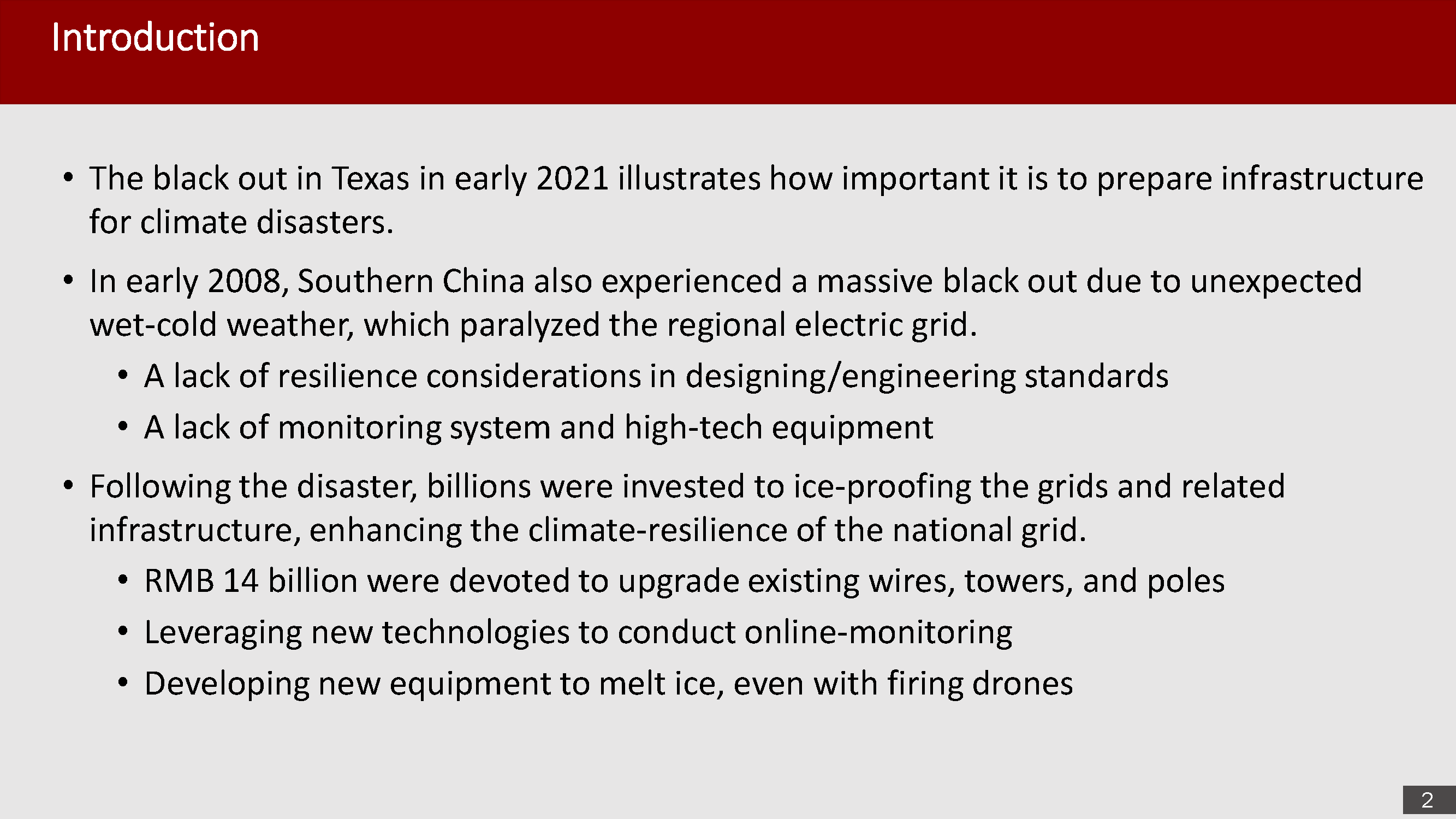Anti-icing Investment in the Electric Grid
The recent disaster and electricity shortage in Texas reminds me the importance to invest in infrastructure that are resilient to climate change. It also reminds me the massive black out in 2008 in Southern China due to wire-icing. A quick study based on literature for those who are interested.
In early 2008, unexpected low-temperature, humidity, and less winds led to severe wire-icing in Southern China across 13 provinces. More than 130 counties experienced black out, while the major grids in provinces such as Guizhou were nearly destroyed entirely.
An important cause of this situation was that there is a lack of resilience considerations in designing and constructing power grids in 1980s and 1990s. The standard design can only survive a once-in-20-year event. The maxim thickness of ice the grid can shoulder is 20mm, while the actual icing were almost all above 30mm. Meanwhile, there is no specialized equipment to remove ice. Once frozen, ice can only be removed with bamboo sticks or the sunshine.
Since the scary disaster in 2008, grid companies in China devoted considerable resources in ice-proofing. From 2008 to 2012, RMB 14 billion were invested to upgrade wires, towers, and poles in Southern China. A online-monitoring system is set up to warn potential icing events. Many devices were developed to remove ice in major, branch, and sub-branch grids, including drone-based equipment. These efforts passed the tests in the frozen weather in 2014 and 2018.


Click here to view the full slides